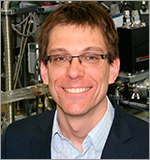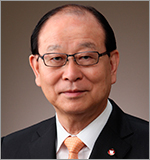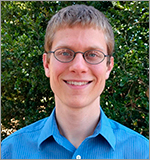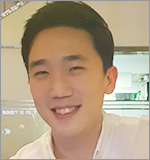The ECS Society Awards will be presented during this meeting at the plenary session. The Charles W. Tobias Young Investigator Award will be presented to Michael S Arnold, University of Wisconsin-Madison and the Edward Goodrich Acheson Award will go to Tetsuya Osaka, Waseda University.
 Charles W. Tobias Young Investigator Award
Charles W. Tobias Young Investigator Award
Monday, October 1 | 0830-0910h
Universal 20 (Expo)
Overcoming the Materials Science Challenges to Nanocarbon Electronics
By Michael S. Arnold
Michael S. Arnold is currently a Professor of Materials Science and Engineering at the University of Wisconsin-Madison. There, he has directed the Advanced Materials for Energy and Electronics Group since 2008.
Arnold graduated summa cum laude from the University of Illinois at Urbana-Champaign with a BS in Electrical Engineering in 2001. He earned his PhD in 2006 from Northwestern University in Materials Science and Engineering under Professors Mark Hersam and Sam Stupp.
Arnold conducted post-doctoral research at the University of Michigan at Ann Arbor from 2006-2008 with Stephen Forrest. Arnold has been a recipient of the ECS Nanocarbons SES Research Young Investigator Award (2018); the National Science Foundation CAREER award (2014); the American Chemical Society Arthur K. Doolittle Award in Polymeric Materials Science and Engineering (2012); the Presidential Early Career Award for Scientists and Engineers (PECASE) – nominated by the U.S. Department of Defense, Army Research Office (2011); the U.S. Department of Energy (DOE) Early Career Research Award (2011); and a 3M Non-Tenured Faculty Award (2011, 2012, 2013). He was also a runner-up in the U.S. Department of State ASPIRE Competition (2017).
Arnold’s work addresses fundamental challenges – in controlling the growth, processing, ordering, and heterogeneity of nanomaterials and in understanding phenomena beyond the scale of single nanostructures – that must be overcome to exploit nanomaterials in technology. Arnold’s research has resulted in 100 journal publications and 15 patents/patent applications.
 Edward Goodrich Acheson Award
Edward Goodrich Acheson Award
Tuesday, October 2 | 1720-1800h
Universal 8 (Expo)
How to Achieve Industrial Innovation from Basic Research
By Tetsuya Osaka
Tetsuya Osaka is Senior Research Professor and Emeritus Director of the Institute for Research Organization for Nano & Life Innovation, and Professor Emeritus of the Faculty of Science and Engineering, Waseda University, Tokyo, Japan.
Osaka is a past President of The Electrochemical Society. He has also served as president of the Magnetics Society of Japan, president of the Electrochemical Society of Japan, president of Japan Institute of Electronic Packaging, vice-president of the Surface Finishing Society of Japan, vice president of the International Society of Electrochemistry.
His research field is electrochemical technology, and his recent work is focused on electrochemical nanotechnology, including electro- and electroless-deposition/surface finishing, electronic packaging materials, magnetic storage and energy storage devices, and chemical- and bio-sensors.
Osaka currently focuses on batteries and battery energy managing system. He has contributed as an author and/or editor to more than 90 books and published more than 1,020 original and review papers in these fields. He has been identified as one of the highly cited researchers in the materials science category in Thomson ISI’s ISIHighlyCited.com.
His technical contributions have been recognized by many awards including the Medal with Purple Ribbon bestowed from the Decoration Bureau of the Cabinet Office, Japan, in 2010, IBA Yeager Award of International Battery Association in 2017, Electrochimica Acta Gold Medal of the International Society of Electrochemistry in 1999.
 Norman Hackerman Young Author Award
Norman Hackerman Young Author Award
Tuesday, October 2 | 1720-1800h
Galactic 1, (Sunrise)
Multiphase Porous Electrode Theory
By Raymond Smith
Raymond Smith earned his PhD in chemical engineering from MIT in 2017 with a minor in computational materials science.
While a graduate student, Smith worked with Martin Bazant on various projects involving mathematical modeling of electrochemical systems. His primary focus involved developing models for battery electrode materials with phase separation behavior, coupling them to full porous electrode battery models, and validating those models with the help of experimental collaborations.
Smith also participated in the MIT Chemical Engineering Practice School program, both as a student and as a station director. In this program, he was involved in high-intensity, short-term industrial consulting collaborations on a widely diverse set of projects at Corning, BP, MedImmune, and Emirates Global Aluminum.
Smith earned his undergraduate degree from Clemson University. For the past year, he has been working as an engineer at Tesla, focused on battery performance and lifetime modeling.
 Bruce Deal & Andy Grove Young Author Award
Bruce Deal & Andy Grove Young Author Award
Shihyun Ahn received his BS and MS degrees in chemical engineering from Carnegie Mellon University and earned his PhD degree from the University of Florida in May 2017.
His research focused on the effect of irradiation damage on GaN-based metal-oxide semiconductor high-electron mobility transistors and β-Ga2O3. He is also interested in the processing and characterization of III-V compound semiconductors.
He authored or coauthored over 20 papers during his PhD studies.
Ahn is currently working in the Ultraviolet Product Development Department at Seoul Viosys in Korea.





